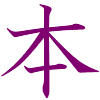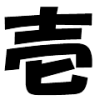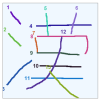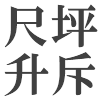




Japanese
numbers
kanji
recognition
diagrams
Japanese
units
The small kana "tsu" is a hiragana or katakana "tsu" character reduced in size. To see the difference in size using the Japanese fonts in a browser, compare the size of the full-sized hiragana "tsu" in たつと (ta-tsu-to) to the size of a small one in たっと (tatto), or the full-sized katakana "tsu" in タツト (ta-tsu-to) to a small one in タット (tatto).
The small tsu is used to represent a doubled or "geminate" consonant, known as a sokuon (促音) in Japanese. The sokuon is usually represented in romanized Japanese by a doubled consonant, such as the double t in hatto (ハット), "hat".
For example, "Pocky", a kind of snack, is written in kana as ポッキー, which is ポ, "po", ッ (sokuon), キ, "ki", and ー (chōon) (see What is the long line symbol used in katakana?). The sokuon is a written way to represent the doubling or lengthening of the k consonant. This kana is romanized as Pokkii. "Wait", or Matte, the te form of the verb matsu (see How does the te form work?), is written as 待って, which is 待 (kanji), っ (sokuon), て (te), with the sokuon representing the doubling of the t consonant.
The small tsu is also used at the end of a sentence, to indicate a glottal stop (a sharp or cut-off articulation), which may indicate angry or surprised speech. See What is that small tsu at the end of a sentence?
There are several methods to input a small tsu on a computer, such
as xtu, ltu, or ltsu. See
How is Japanese input on a computer?
In the International Phonetic Alphabet (IPA), a way of representing speech sounds, the sokuon sound is marked either with a colon-like mark, or a doubled consonant. Here are pairs of words with and without this sound written in IPA:
| Word | Meaning | Romaji | IPA representations |
|---|---|---|---|
| 来て | come | kite | kʲite |
| 切手 | postage stamp | kitte | kʲitːe; kʲitte; kʲit̚te |
| あさり | clam | asari | asaɾʲi |
| あっさり | readily | assari | asːaɾʲi; assaɾʲi |
In historical kana usage (see What is historical kana usage?), the sokuon sound was often represented by a full-sized tsu kana rather than a small one. Similarly, the Japanese form of Morse code had no way to represent this other than using a full-sized kana.
In all forms of romanization (see What are the systems of romanization of Japanese?) the sokuon is represented by doubling the consonant which follows it. The only exception is the c in chi in the Hepburn system. For this, a preceding sokuon is represented by a "t". For example, Japanese tea is written in kana as まっちゃ (ma-sokuon-chi-small ya). In Hepburn romanization this becomes matcha. The Nippon-shiki (see What is Nippon-shiki romanization?) and Kunrei-shiki systems both represent this as mattya, thus avoiding one inconsistency.
Copyright © 1994-2025 Ben Bullock
If you have questions, corrections, or comments, please contact Ben Bullock or use the discussion forum / Privacy policy

|

|

|

|

|
| Book reviews |
Convert Japanese numbers |
Handwritten kanji recognition |
Stroke order diagrams |
Convert Japanese units |